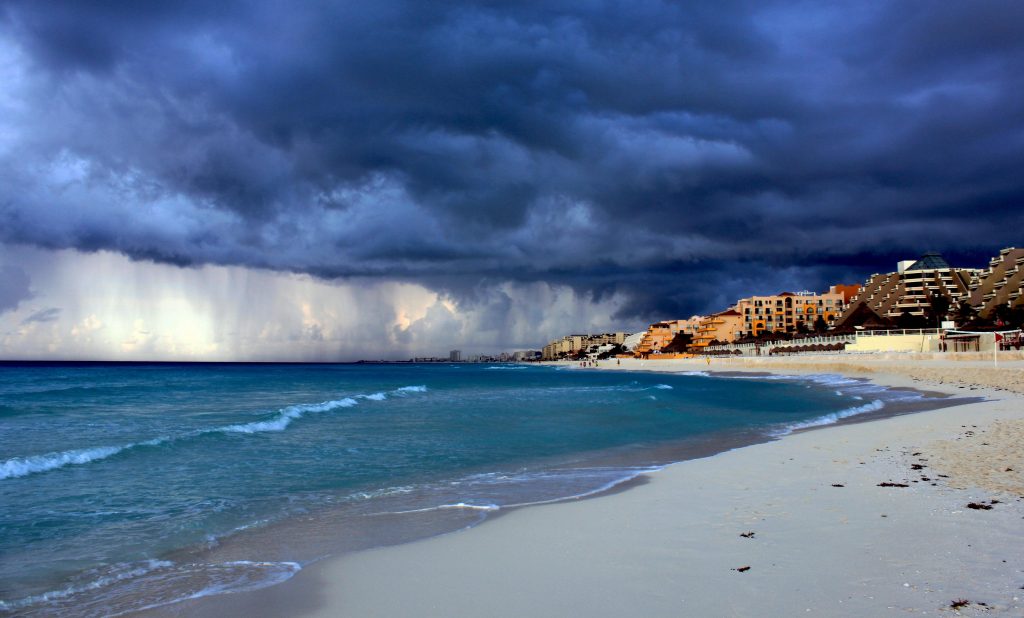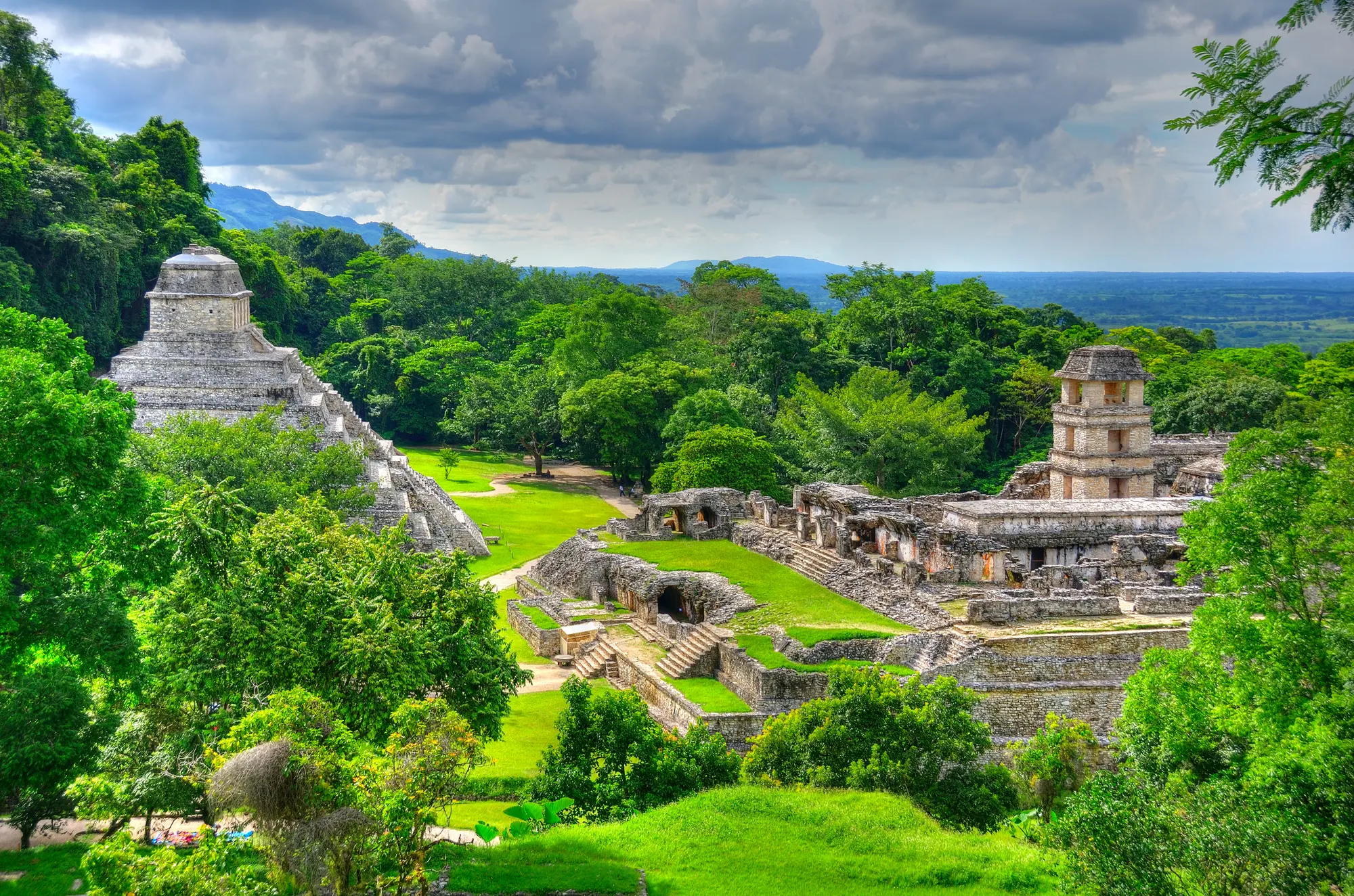Moving on a journey to Mexico: when is the best time to visit?
Mexico is an amazing country with a rich history, colorful culture, and stunning scenery. Planning a trip to Mexico can be exciting, but it also requires careful preparation. In this introduction, let’s look at the key aspects to consider when planning a trip, or even a move, to this amazing country.
The first and one of the most important steps in preparing for a trip to Mexico is choosing the time of year to visit. The country’s climate is diverse and can vary greatly from region to region and season to season. In order to avoid extreme weather conditions, it pays to take seasonal patterns into account and choose the best period to travel.

Choosing an itinerary and final destination is also an important aspect of planning a trip. Mexico offers an endless variety of places to visit, including historic cities, picturesque beaches, ancient pyramids and colorful markets. When selecting an itinerary, you should consider your interests and preferences, as well as assess the accessibility and safety of your chosen destinations.
An equally important stage in preparing for a trip to Mexico is familiarizing yourself with local traditions and culture. Mexico is rich in historical and cultural attractions, and knowing the main aspects of the local culture will help you have a richer travel experience. It’s also worth paying attention to safety and health issues by reading travel tips and cautions.
Preparing for a trip to Mexico also includes organizational aspects such as booking airline tickets, accommodations, renting a car (if necessary), and obtaining a visa and travel insurance. A properly planned trip will allow you to avoid unpleasant surprises and enjoy every moment of your stay in this amazing country.
In this article we will tell you the best time to plan your trip, as well as provide useful tips and recommendations for a successful trip to Mexico.
Climatic features of Mexico

Mexico, like most Central American countries, has a diverse climate that varies by region, altitude and season of the year. The different climate zones in Mexico create unique conditions for travel and recreation, and knowing the characteristics of each season will help travelers plan their trip as comfortably as possible.
Mexico’s dry season usually lasts from November through April. At this time of year, there is virtually no precipitation, and the weather is consistently sunny and dry. Temperatures vary from region to region: in the north of the country they can reach high temperatures, while on the Pacific coast they can remain more comfortable due to the sea breeze. The dry season is considered one of the best times to visit Mexico, especially for beach lovers and outdoor activities.
The rainy season in Mexico runs from May through October. This is the period when most of the country receives the most rainfall. During this period, the risk of hurricanes and tropical storms is particularly high, especially in the south of the country and in coastal areas. However, even during the rainy season in Mexico, you can find areas with more stable weather, such as in the central part of the country or on the Caribbean coast.
The cold season in Mexico occurs from November through February, although climatic conditions can vary from region to region. In the north of the country, temperatures can dip below freezing, especially in the mountainous areas, while the Pacific coast and the Caribbean remain milder. This period can be a great time to visit Mexico’s cultural and historical sites, such as ancient pyramids and colonial cities.
The hot season in Mexico is during the summer months of June through September. During this time, temperatures can rise to high levels, especially in the desert areas of the north of the country. In coastal areas and islands, temperatures remain more pleasant due to humidity and sea breezes. The hot season is the peak tourist season in Mexico, especially on the coast, where travelers enjoy beach vacations and water sports.
Each of these climatic seasons offers different features and opportunities for travelers. It is important to consider the weather conditions when planning a trip to Mexico and choose the best time depending on your preferences and interests.
High season: the best time to visit

The high season in Mexico is usually between December and April, when the climate is most favorable for visiting. December is the beginning of the high season, when many tourists come to Mexico to celebrate Christmas and New Year’s Eve. At this time of year, the weather is usually sunny and warm, especially on the coast, making Mexico an attractive winter vacation destination.
January and February are the peak of Mexico’s high season. This is the time when the largest number of tourists visit the country to enjoy the warm climate and a variety of activities. Temperatures remain pleasant and comfortable, especially along the coast, making it ideal for beach vacations and outdoor activities.
March and April are also considered part of Mexico’s high season. During this time of the year, the climate remains stable and the temperatures are even more pleasant. It is a great time to visit beaches, historical sites and participate in various festivals and events.
During the high season, Mexico also hosts many events and festivals that attract tourists from all over the world. For example, in December, there are Christmas and New Year celebrations accompanied by colorful parades, fireworks and traditional rituals. In January and February, various cities hold carnivals with costumed processions and musical performances. In addition, at this time of year, many regions of Mexico celebrate Catholic holidays such as Purim and Easter with traditional religious ceremonies and festive parades.
Thus, Mexico’s high season offers the perfect conditions to visit this amazing country, including a favorable climate and a variety of activities and festivals. It is important to plan your trip in advance to enjoy all the benefits of this time of year and get the most out of your trip.
Low season: pros and cons

The low season in Mexico is usually during the summer months of June, July and August. This period is characterized by fewer tourists and a higher likelihood of rain and wet weather. However, visiting Mexico during the low season has both advantages and disadvantages.
One of the main advantages of low season is that the tourist attractions and beaches are not as crowded as they are during high season. This means that you can enjoy a more relaxed and secluded atmosphere, visiting popular sites and attractions without long lines and crowds of tourists. In addition, discounts on hotel stays and other services are more common during the low season, which can make traveling to Mexico more financially accessible.
However, there are some disadvantages to visiting Mexico in low season. First is the climatic conditions: the summer months can be very hot and humid, especially on the coast and in the lowlands. The high humidity can make staying outside unpleasant and sometimes even dangerous due to possible heat stroke or exhaustion. In addition, summer falls during the low season, which can lead to flooding and other infrastructure problems.
To avoid tourist crowds and deal with the negative aspects of low season in Mexico, there are a few tips you can follow. First, choose more remote or less popular places to visit to avoid the crowds. Second, plan activities for early morning or late evening hours when the weather may be nicer and less crowded. It’s also a good idea to carry sun protection and mosquito and other insect repellent, especially when it rains.
Overall, visiting Mexico during the low season can be a good choice for those who prefer to avoid the crowds and enjoy a more relaxed atmosphere. However, it is important to be prepared for the fickle weather and take precautions to make the trip enjoyable and safe.
Specific places and activities at different times of the year
In Mexico, each season has its own specificities and attractions for tourists. How to choose the best time to visit this amazing country? Let’s consider the climatic features and tourist opportunities of each season.
Spring:

Beaches: In spring, beach resorts such as Cancun, Playa del Carmen and Tulum on the Yucatan Peninsula offer ideal conditions for water sports such as surfing, kitesurfing and diving. The water becomes warmer and more swimmable, and the beaches become less crowded after the peak tourist season ends in winter.
Cities: Spring is also a good time to visit Mexico’s historic cities such as Mexico City, Puebla and Oaxaca to enjoy the mild weather and explore local attractions and cultural heritage.
Nature: Forests and national parks such as Cosumel and Cabo Pulmo come alive in spring with a variety of plants and colors, making them ideal for hiking and wildlife watching.
Summer:

Beaches: In the summer, Mexico’s beach resorts offer great sunbathing and swimming. Especially popular are the beaches on the Caribbean coast, where the water is at its warmest and tourists can enjoy a variety of water activities.
Cities: Cities in Mexico’s mountainous regions, such as San Cristobal de las Casas and Guanajuato, where the climate is more pleasant and cooler, are also worth visiting in summer.
Nature: This is a great time to visit Mexico’s volcanoes and nature reserves, such as the Popocatepetl Volcano and Cañón del Sumidero National Park, where you can hike and enjoy amazing scenery.
Fall:

Beaches: In the fall, the weather on Mexico’s beaches remains warm and they remain popular with tourists. The fall months also bring a calmer atmosphere and fewer crowds on the beaches.
Cities: In the fall, it is worth visiting Mexico’s colonial cities such as Guadalajara and Mérida to enjoy the architecture, local cuisine and cultural events.
Nature: This is a great time to visit places like Mount Pico de Orisaba and Barranca del Cobre Canyon to enjoy the vibrant fall colors and beautiful scenery.
Winter:

Beaches: In winter, Mexico’s beaches enjoy the most pleasant weather. Tourists can enjoy warm sunshine and crystal clear waters, making this the perfect time for a coastal vacation.
Cities: During the winter months, cities in Central Mexico such as Mexico City and Puebla are worth visiting to enjoy the festive atmosphere and celebrations.
Nature: Winter is also the time to visit natural attractions such as the Cascada de Juarum Waterfall and the Iztaccihuatl Volcano to enjoy the colorful winter scenery and outdoor activities such as snowboarding and skiing.
Moving to conclusion
In summary, choosing when to visit Mexico is the key to determining your trip. Different seasons offer a variety of opportunities for tourists, from beach vacations to exploring the local culture and natural attractions. It is important to take into account climatic peculiarities, peculiarities of tourist seasonality and personal preferences.
Don’t forget that choosing the right time to travel can make your trip more enjoyable and memorable. Whatever season you choose, Mexico promises you unforgettable impressions and vivid memories.
And remember that our moving company is ready to be your reliable partner in moving to Mexico. We will provide you with professional assistance in organizing a carefree relocation, so that your journey begins the moment you decide to embark on this amazing adventure.
Contact us in any way:
Telephone: (954) 773-9667
E-mail: abs@absoluteinc.org





